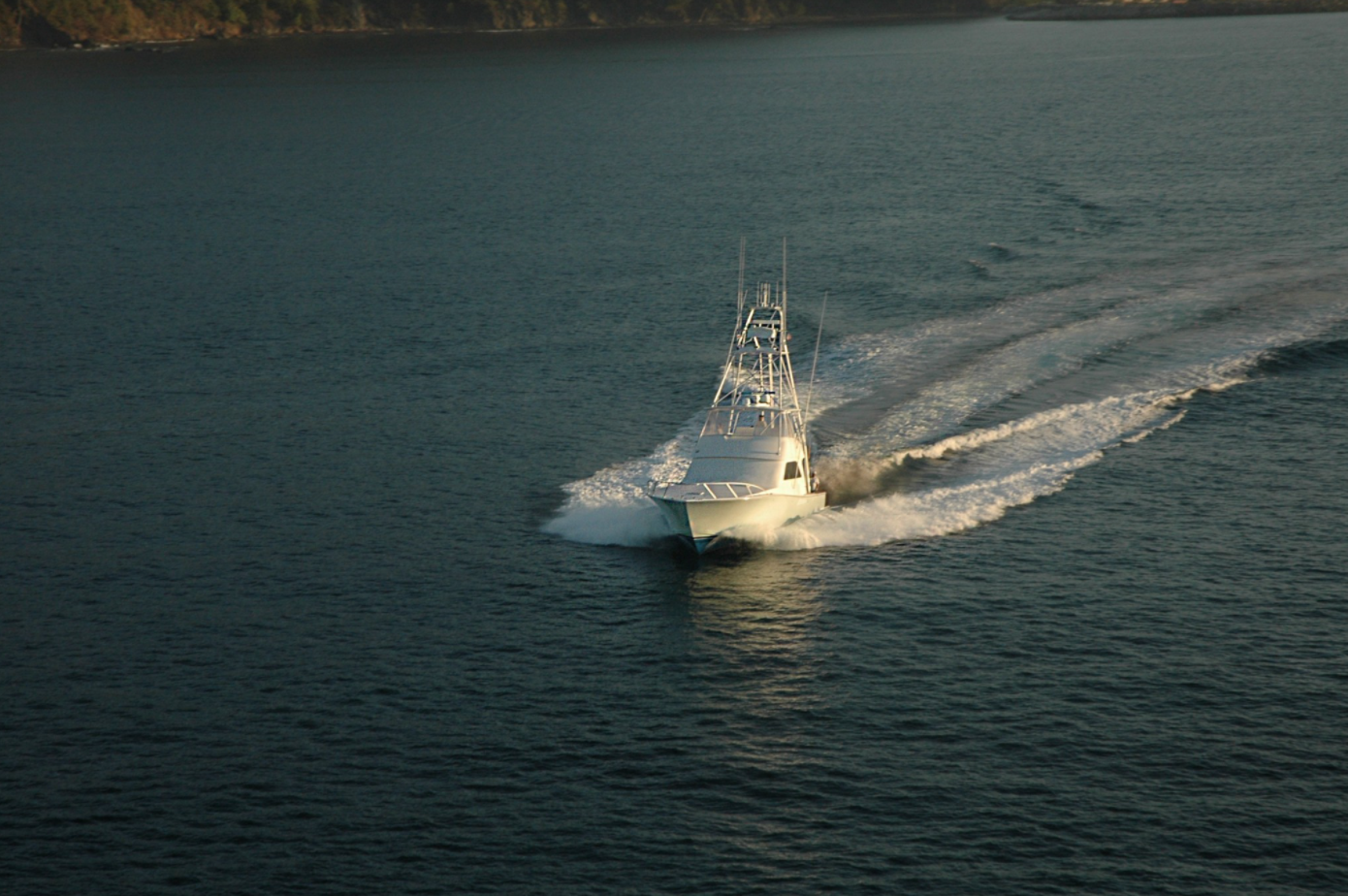Article Courtesy: inthebite.com | Originally Published: 3/10/2021 | Click here for original article
No Captain Can Claim Perfection
By Piet Van Alder
We were less than 100 yards from the fuel dock when the second motor died. In a futile gesture, I tried to restart it, but the reality was quite clear. We were out of fuel. The wind was from the southeast at 20 knots and we were now dangerously adrift, heading into unknown waters of unknown depth, and approaching other docks and vessels like a wayward pinball. I looked towards the bow to check the anchor, and there wasn’t one. An otherwise happy day had turned to sh*t in a hurry. We kept our cool and sprang into action.
My friend Chuck Voight and I were in the middle of a delivery on a 42-foot custom sportfish and we were headed for Beaufort, South Carolina. We left the Palm Beach inlet at 8 in the morning and expected to reach St. Augustine and the Conch House Marina at about 4. Eight hours at 25 knots—we expected to burn about 40 gallons an hour between the two six-cylinder Man diesels. The tank held 420, at least that’s what it said on it, so we figured 320 gallons would leave us with plenty. But were we really burning 40 an hour? Obviously not!
Many captains and mates choose to deliver vessels for friends, referrals or companies, sometimes over great distances. These vessels are not the ones we generally work on on a daily basis, and there’s no question that almost all boats are different. We usually know our own fuel burn, where the anchor is, where the safety stuff is, how fast to cruise, etc… But on an unfamiliar boat, it’s the captain’s job to find all that stuff out. In our case, the delivery happened quickly, and I did not go through the vessel properly. Guilty.
Probably the most important thing to check first is where the life raft and safety gear is. Has the raft been recently inspected? Are the flares and all the other stuff up to date? Is there an actual “ditch bag” in case of emergency? Where’s the anchor? How do you deploy it? Is the chain and the rode all tangled up? Make sure you check that. If there’s a windlass, does it even work? Where is the document in the event of a boarding? Are there any tools onboard? Filter wrenches? Spare filters – racors and secondaries? Spare oil? Oil absorbers and rags? Coolant? Fresh water? What does the vessel usually cruise at? How much fuel does it hold?
Remember, it’s usually not all useable. Do you have a paper chart for all areas you will travel? What about electronic chips for the GPS for those areas? How will you pay for fuel and docking? What is your plan in the event of bad weather? Can the crew stay aboard as long as it takes? The questions are endless…But they are all important. Take the time to familiarize yourself with the new vessel. The owner will be glad you did. That boat is his baby, but while you are at the helm, it’s yours. Plan ahead – for safety’s sake and to ensure a smooth delivery with few or no mishaps.
In the end, we threw the anchor and it held, mere yards from the other vessels. I’m a member of Boat U.S., which is money ridiculously well-spent, and they came over from Comachee Cove and rescued us and towed us over to the fuel dock. It was rather embarrassing, but there weren’t too many people around, and if you think about it, those guys at Sea Tow and Boat U.S. are often quite busy!
No captain can claim perfection, and if my story can help just one other captain avert a bad situation, I’ll write it every time…






